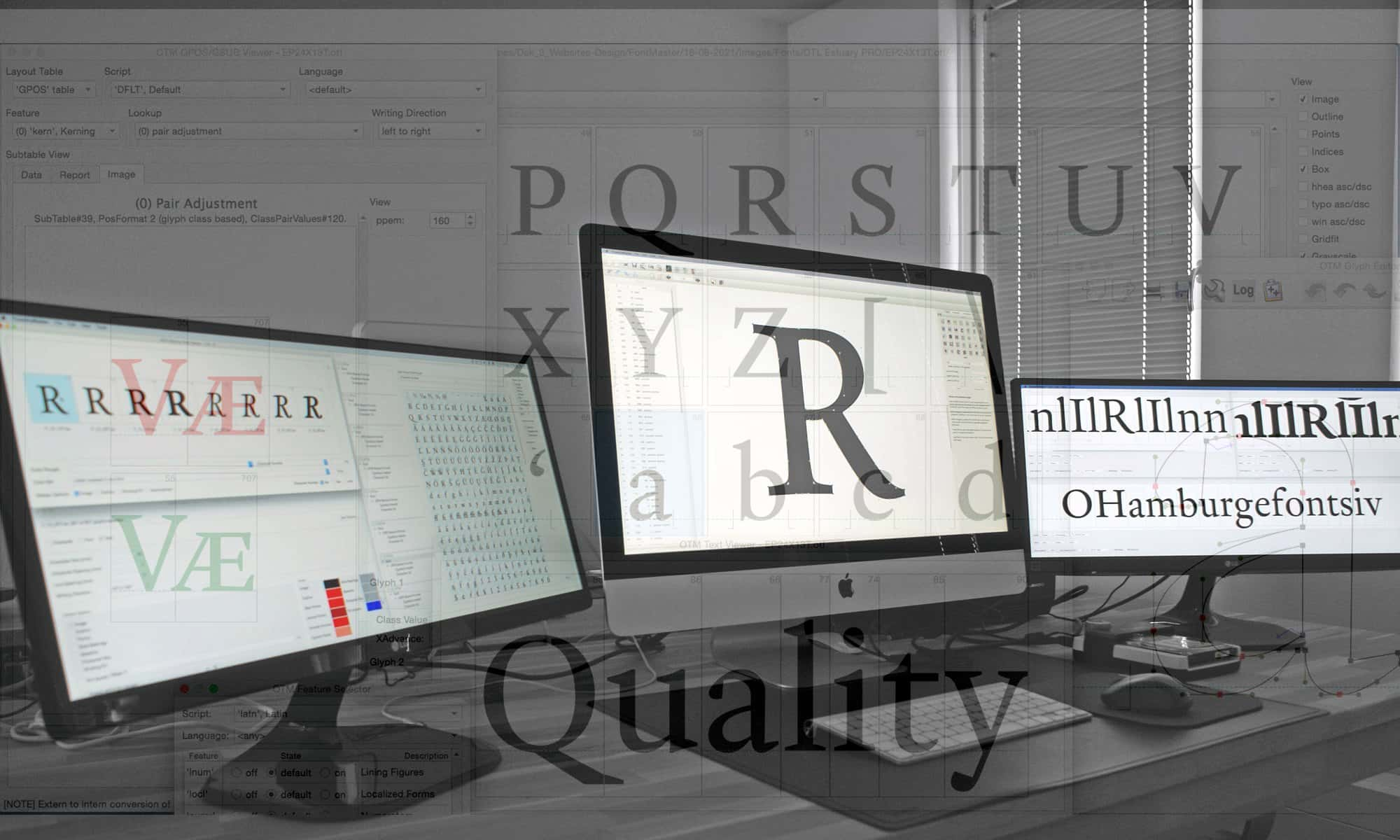dtl OTMaster 8.9 is available exclusively from the Dutch Type Library.
Introduction
The flagship of the dtl font tools is without any doubt OTMaster (otm). This is a highly sophisticated post-production application for reviewing, editing, and altering tables and glyphs of fonts with a sfnt-file structure. otm is the multi-functional ‘swiss knife’ for professional font production. It is used by many experts in the field and applied by some of the largest companies in the software industry, among which Adobe.
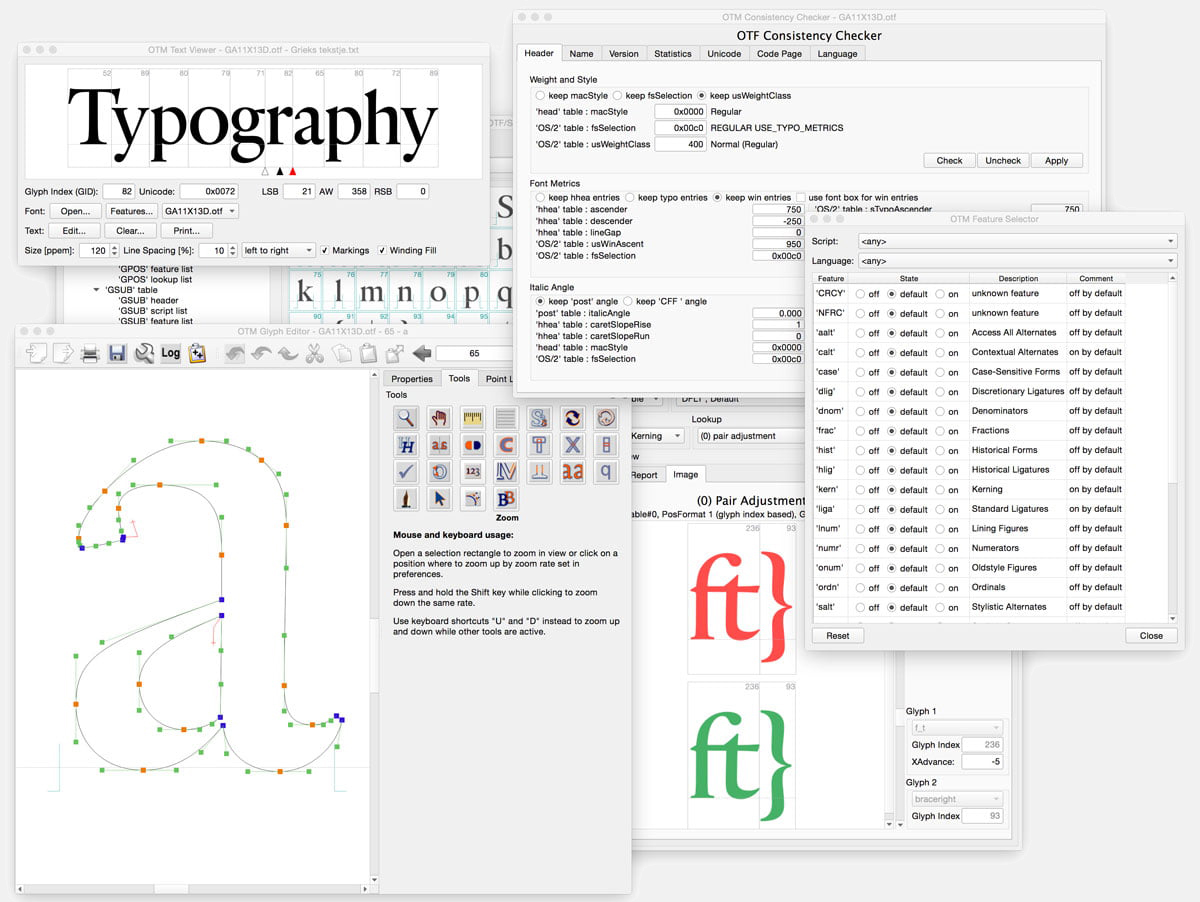
otm is an indispensable tool for professionals because it offers extensive functionality for, for example:
– quality control and post-production of fonts,
– assurance of consistency among type families,
– customization of fonts (modification of glyphs, adding characters, editing tables, etc.).
– font-data enhancement (adding ot Layout features, kerning data, etc.).
Font editors rely on their own proprietary data formats for production. From these data formats, binary fonts for the end-user are compiled as the final step in the font-production process. otm is the ultimate tool for inspecting and adjusting such binary fonts, including those for complex scripts –irrespective of the specific font editor, for example Glyphs, RoboFont, or FontLab viii, used for their creation.
Surgical precision
As Adam Twardoch, product and marketing manager at Fontlab Ltd. stated: ‘OTMaster works with surgical precision: it will only modify the portions of the font that the developer wishes, leaving all other structures unchanged. This makes OTMaster a great companion to any font editor and an indispensable element even in the most complex OpenType font production workflow.’
Graphical user interface
OTMaster makes the editing of tables possible from a graphical user interface. Furthermore, it comes with multiple built-in tools, for example a glyph editor for proofing and editing contours and a text viewer for checking the OpenType Layout features and altering the spacing. A ‘kern’ table viewer is available for checking and refining the kerning, and a ‘gsub’/‘gpos’ viewer to visually test (and in case of ‘gpos’ also directly adjust) these OpenType Layout tables.
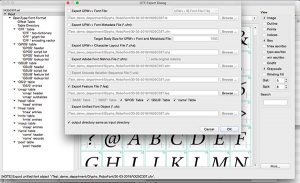
Features subsetting
Two remarkable advanced functions of OTMaster are the import and export of OpenType Layout features files. During import OTMaster compiles these features files to produce binary OpenType Layout tables. For this OTMaster contains a cleverly modified version of Adobe’s Hatch Open Type (hot) tool. This implies that the font’s character set does not have to match the characters listed in the OpenType Layout features file: the features will be automatically subsetted based on the available characters in the font.
One can import (compile) and export afdko-syntaxed feature files for ‘gpos’, ‘gsub’, ‘gdef’, and ‘base’. This makes otm also a great tool for updating and standardizing fonts.
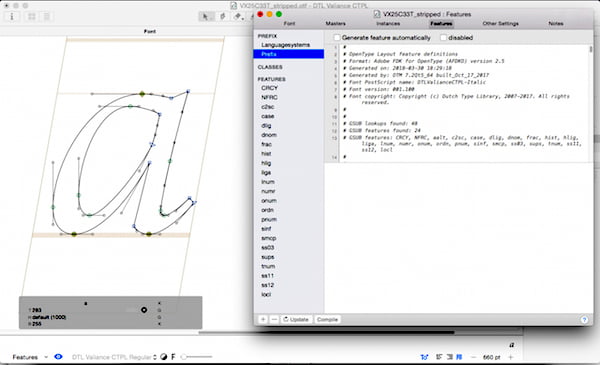
Workflow-integration
The subsetting of OpenType Layout features can be used in a workflow based on third-party font tools, such as aforementioned Glyphs, RoboFont, or FontLab viii. The subsetted features file can be exported from otm and imported in these applications. This is a very straightforward process and forms a consistent and reproducible alternative for building ot Layout features per font directly in the font editors in question.
Mark positioning
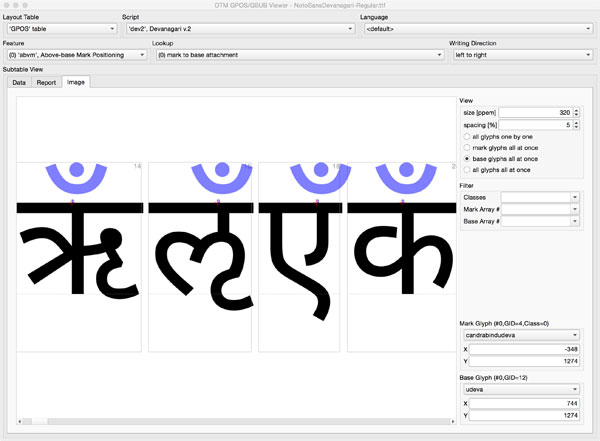
OTMaster supports the ‘gpos’ mark features and their manual and numerical editing with a graphical user interface. The ‘mark to base’, ‘mark to mark’ and ‘mark to ligature’ positions can be displayed. A couple of the ‘gpos’ features can be edited directly, such as ‘mark’, ‘mkmk’, ‘kern’, ‘palt’, and ‘vpal’.
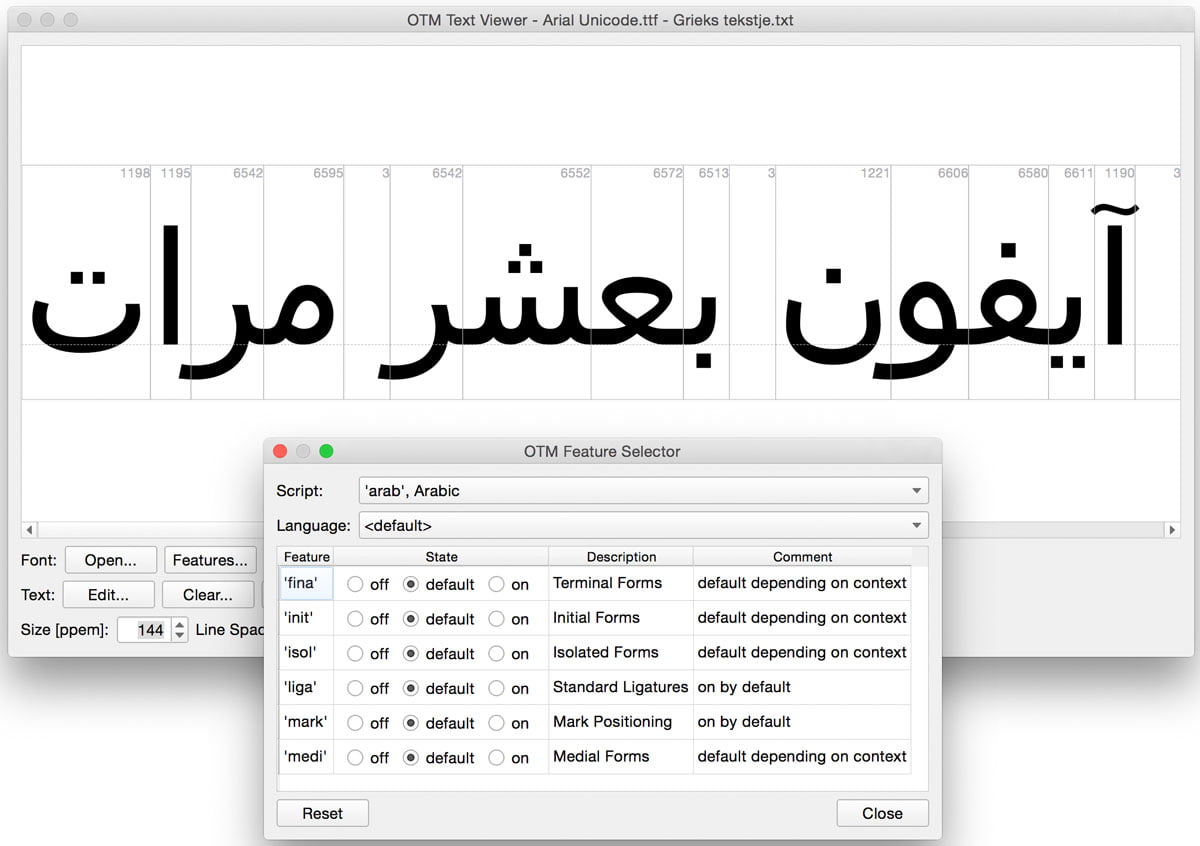
OTMaster contains a powerful text viewer, which has Harfbuzz under the hood for the interpretation of OpenType Layout features. It contains a sophisticated three-state features selector (on / default / off) for checking the interaction between the features.
The application has extensive support for cjk, including for fonts with a very large number of glyphs. It handles cjk-related things, such as ‘name’ table strings, ivs es in the ‘cmap’ table, etcetera, very well.
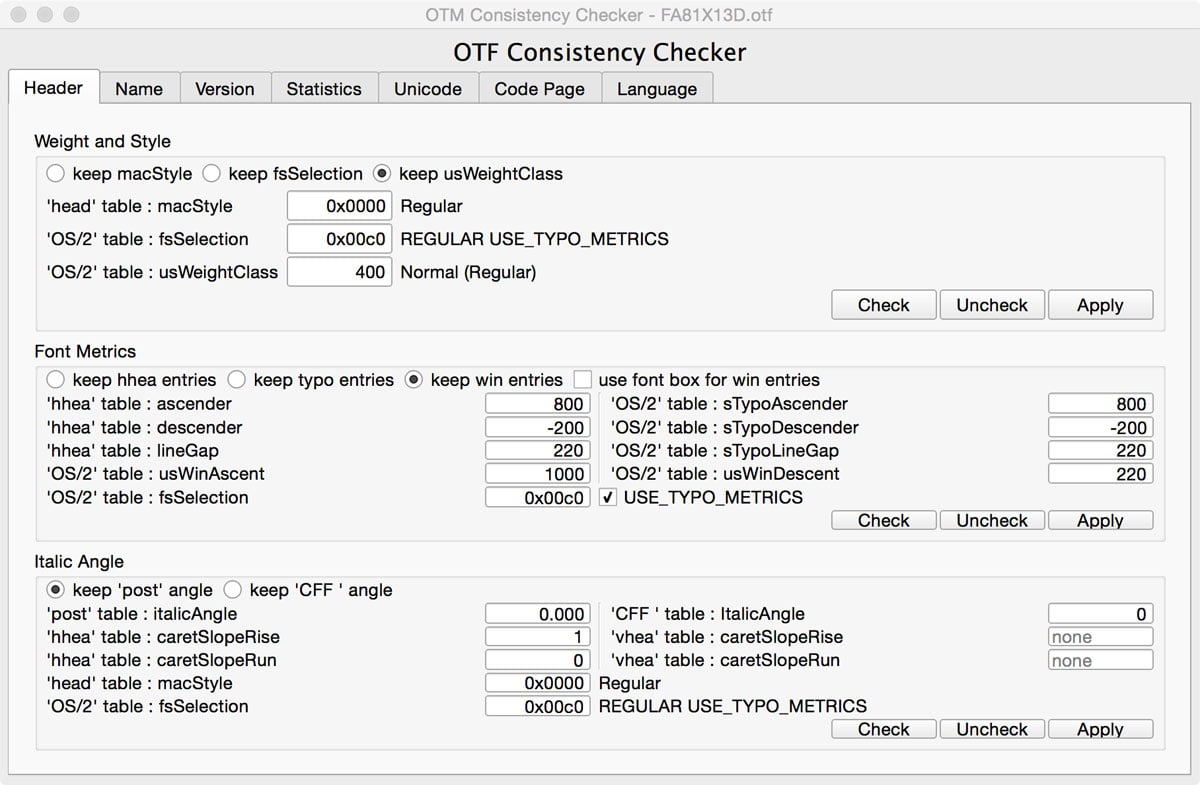
OTMaster contains an extensive consistency checker, which is quite indispensable for the post-production process.
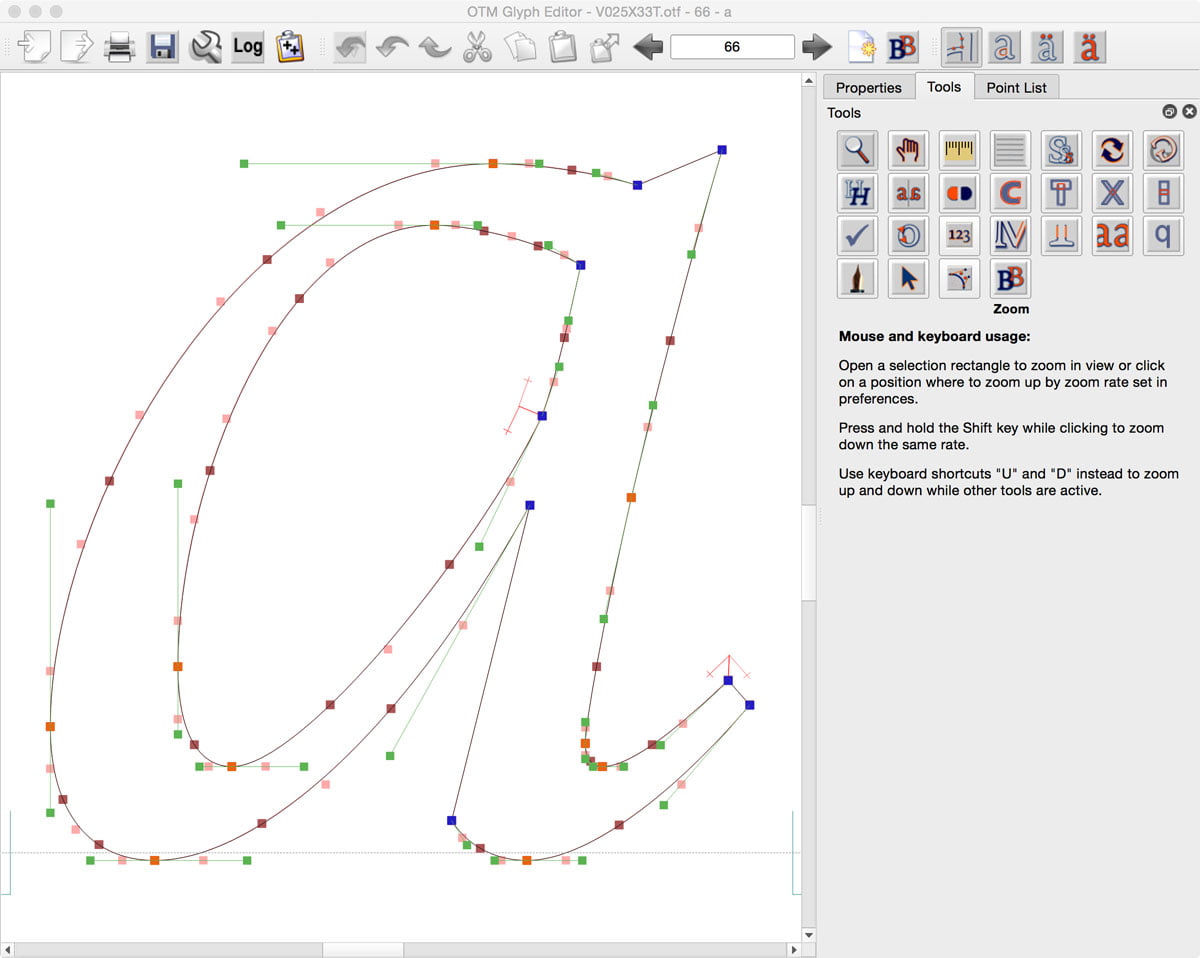
On top of that, OTMaster contains a complete glyph editor. This can be used for adding and/or altering glyphs in the cubic and quadratic Bézier formats. For example, quadratic splines in TrueType-flavored OpenType fonts, which were converted from cubic splines during generation, can be inspected and, if necessary, improved.

OTMaster has the FreeType rasterizer built-in, which is convenient for inspecting hinting generated, for example, with ttfautohint.
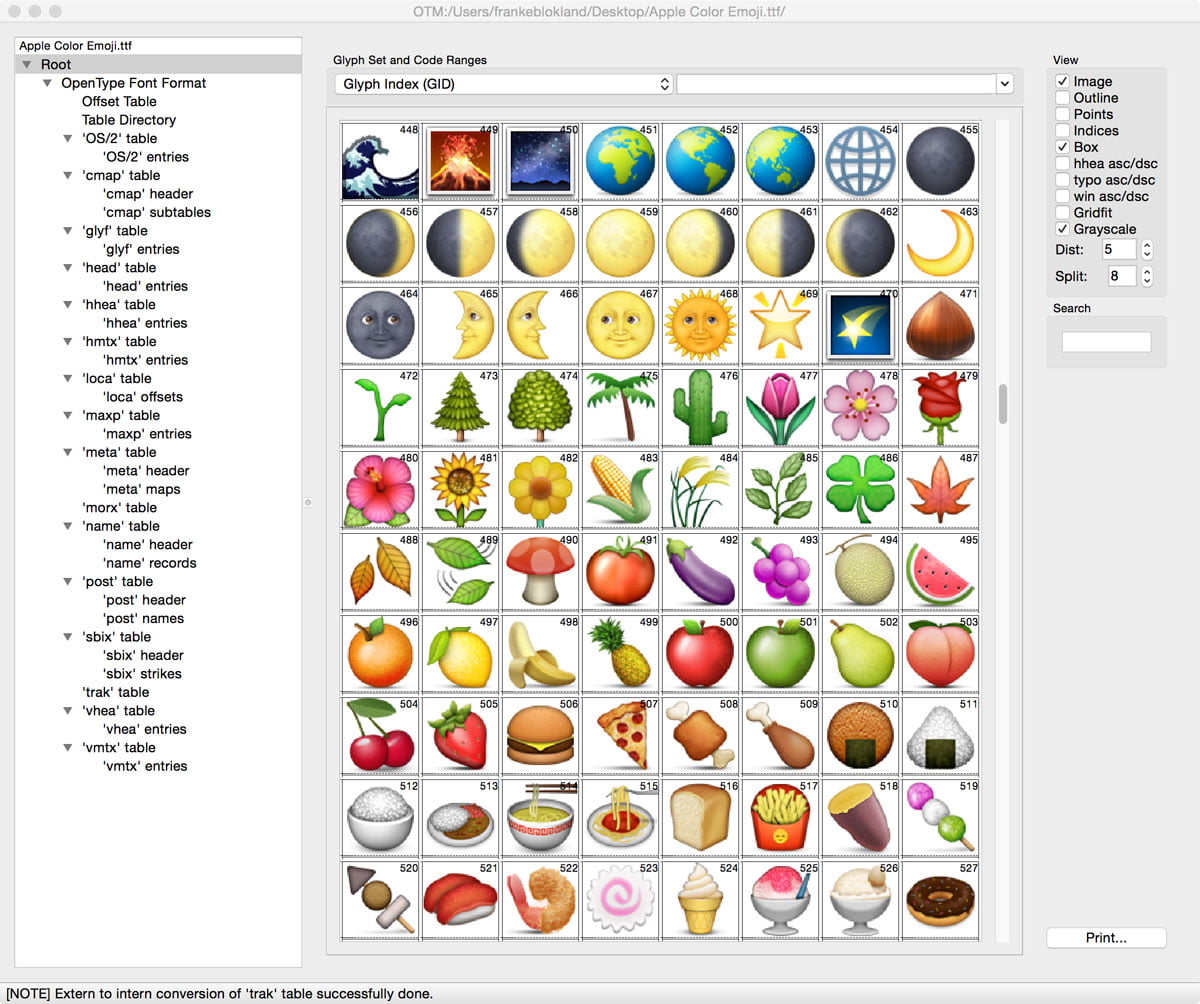
OTMaster supports all competing color OpenType font extensions: Microsoft’s ‘colr’/‘cpal’, Adobe’s ‘svg’, Apple’s ‘sbix’, and Google’s ‘cbdt’/‘cblc’.
Variable fonts
OTMaster supports the OpenType Font Variation format:
– One can list and view the‘fvar’, ‘stat’ and ‘gvar’ tables.
– One can add additional predefined instances in the ‘fvar’ table.
– There is a ‘variation viewer’, which has sliders for all available axes. Moving the sliders will immediately change the glyphs displayed in the ‘font viewer’ or in the editing window. The ‘variation viewer’ can be used to add, modify, or delete instances for the font.

The ‘Side by Side’ viewer has an option to show all defined instances. Of course, this only make sense for fonts with a relatively limited number of instances, such as Skia.
Availability
OTMaster is available for macOS, Windows, and Linux. There is a comprehensive and detailed manual, written and designed by Karsten Luecke, avialable as download in pdf format.
Version 8.x of dtl OTMaster contains nifty additional functionality, including:
– ‘OTvar Support in otm (pdf)
– ‘Side by Side Viewer’ Update (pdf)
– TrueType Collection Editor (pdf)
– Unicode and GlyphName Tool (pdf)
